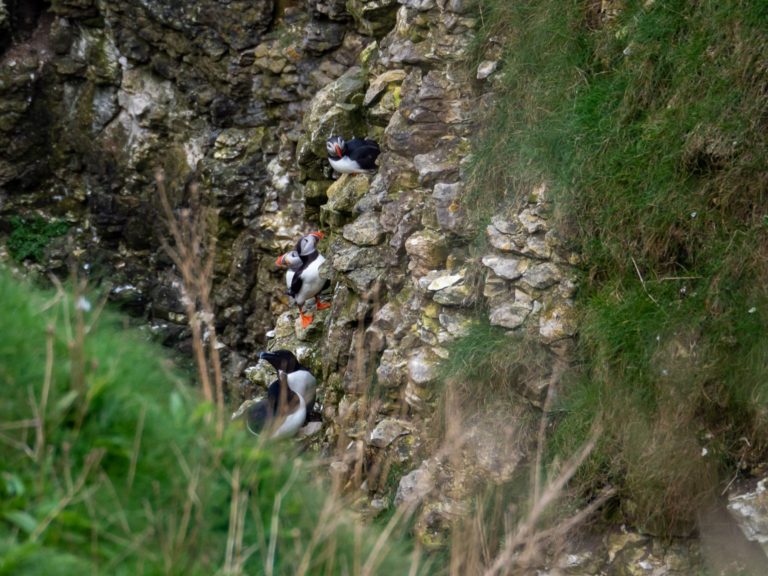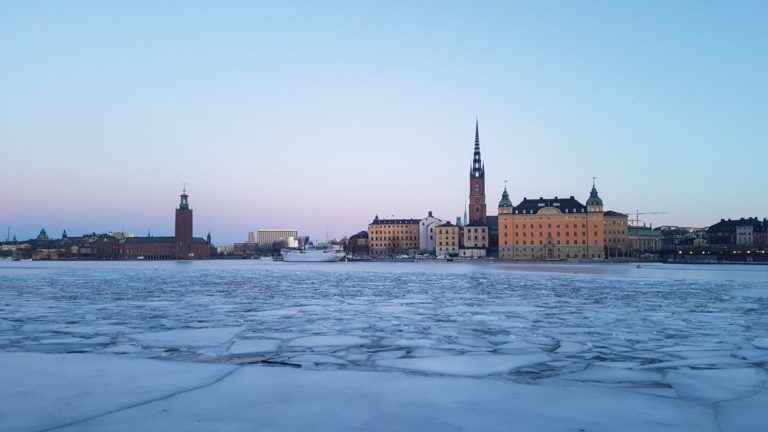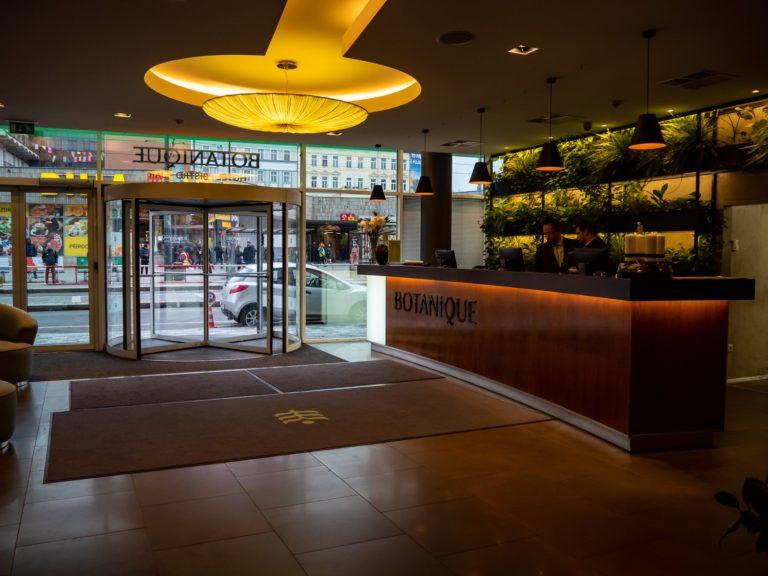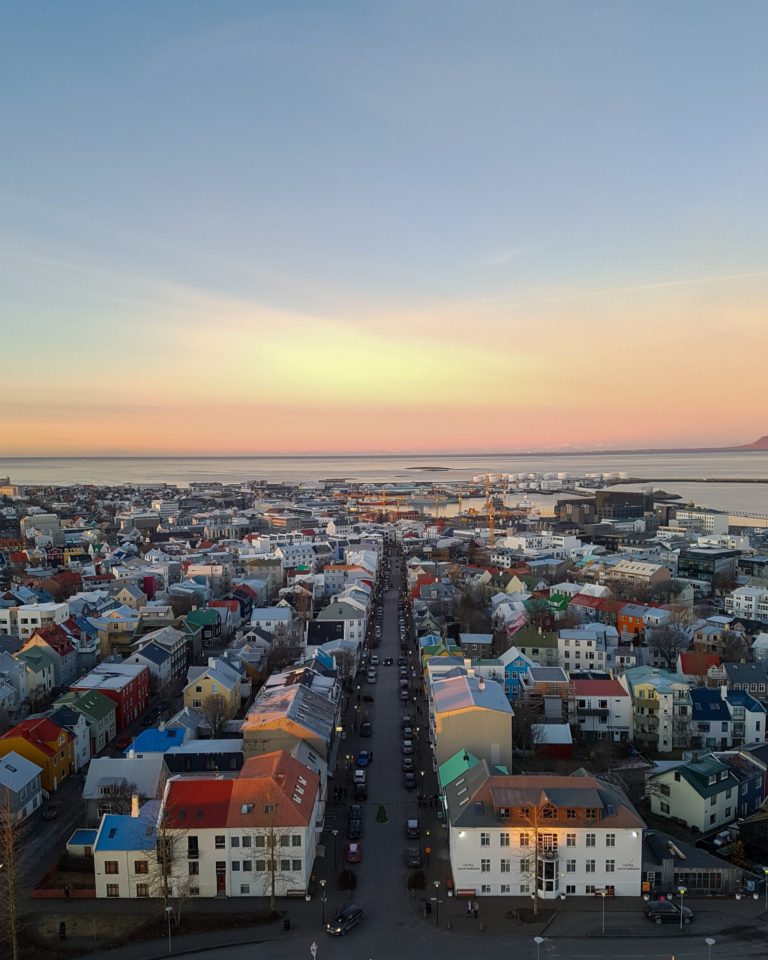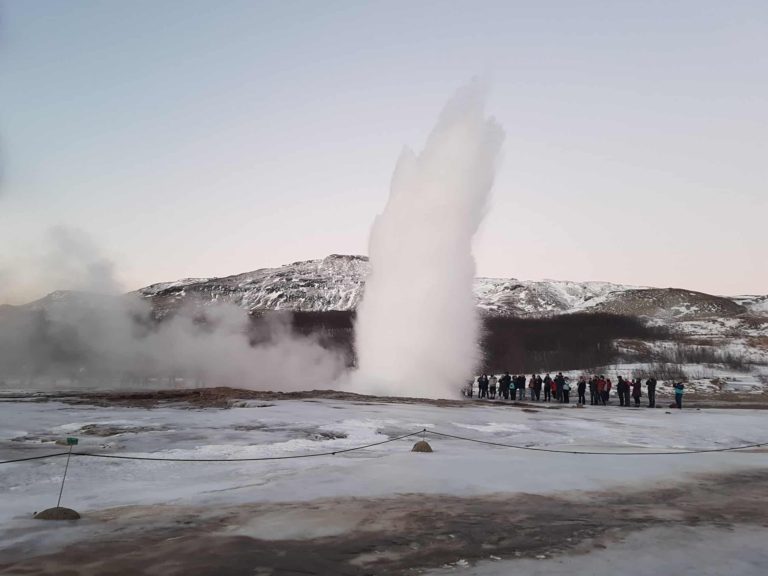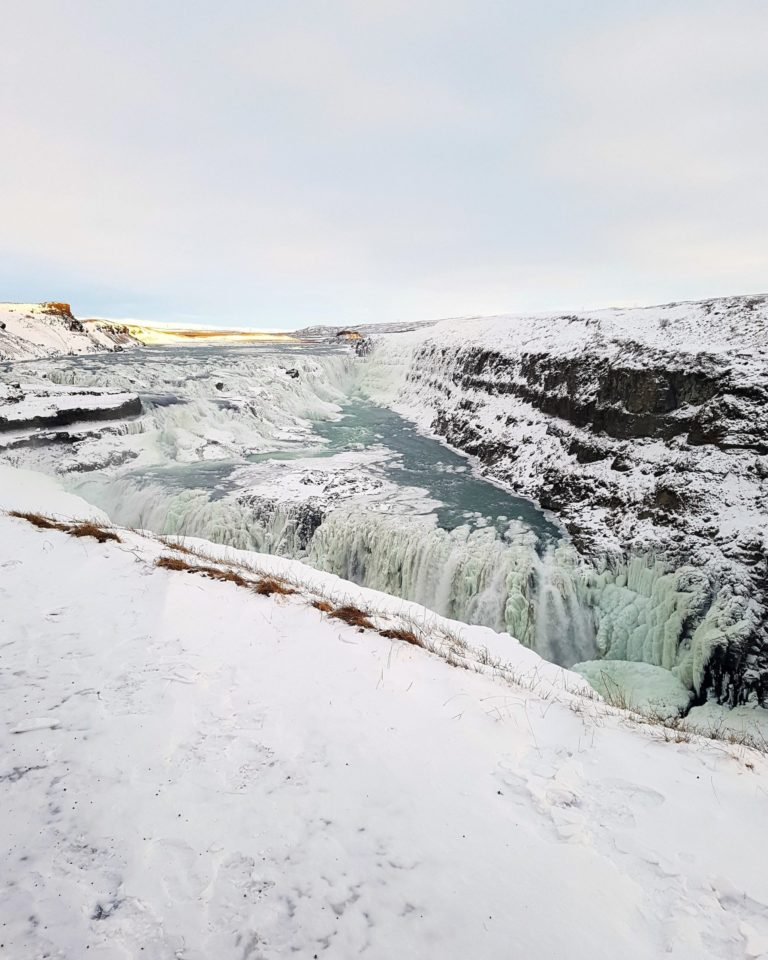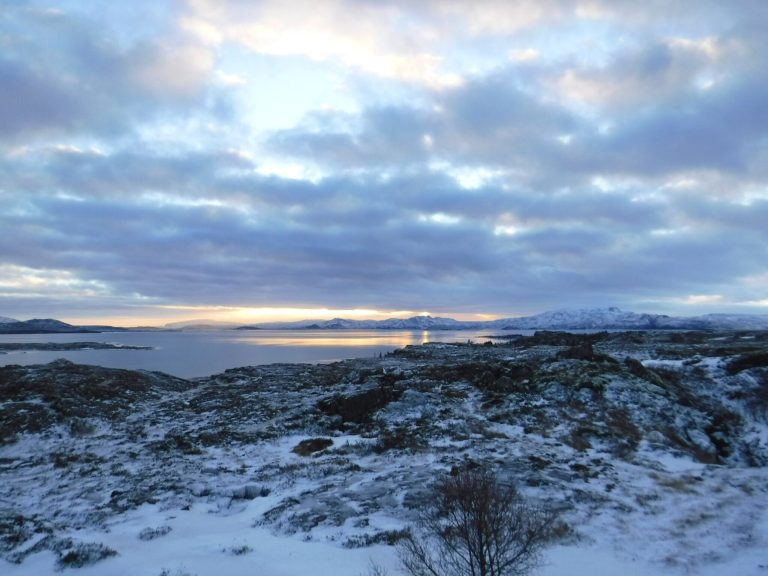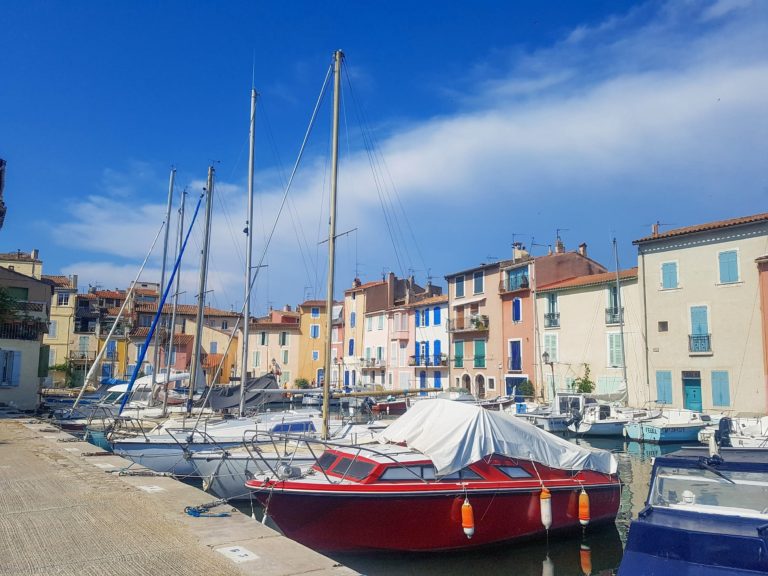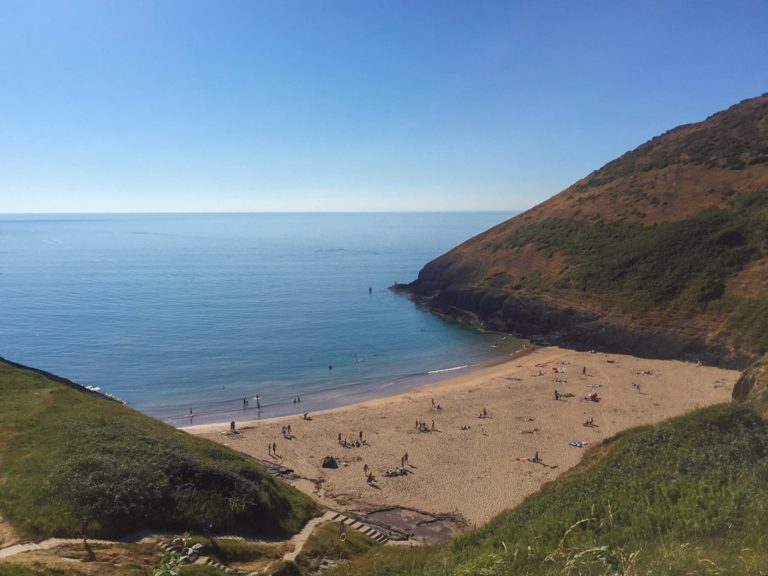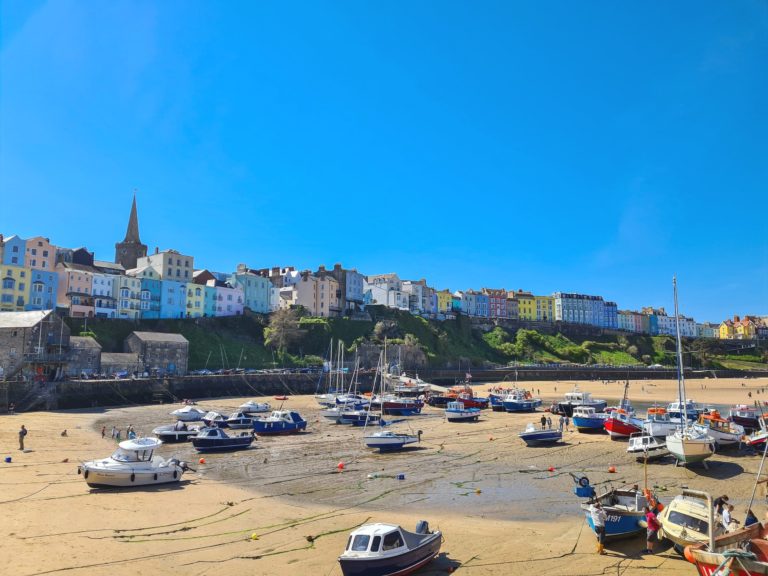The Best European Christmas Markets Road Trip: A One Week Itinerary
How to plan the perfect road trip through Central Europe’s most charming Christmas Market Cities from the UK, or anywhere in mainland Europe.
(Updated 2024)
This post may contain affiliate links, which means we might earn a small commission on anything purchased through these links at no extra cost to you. Learn more on our Disclaimer page.
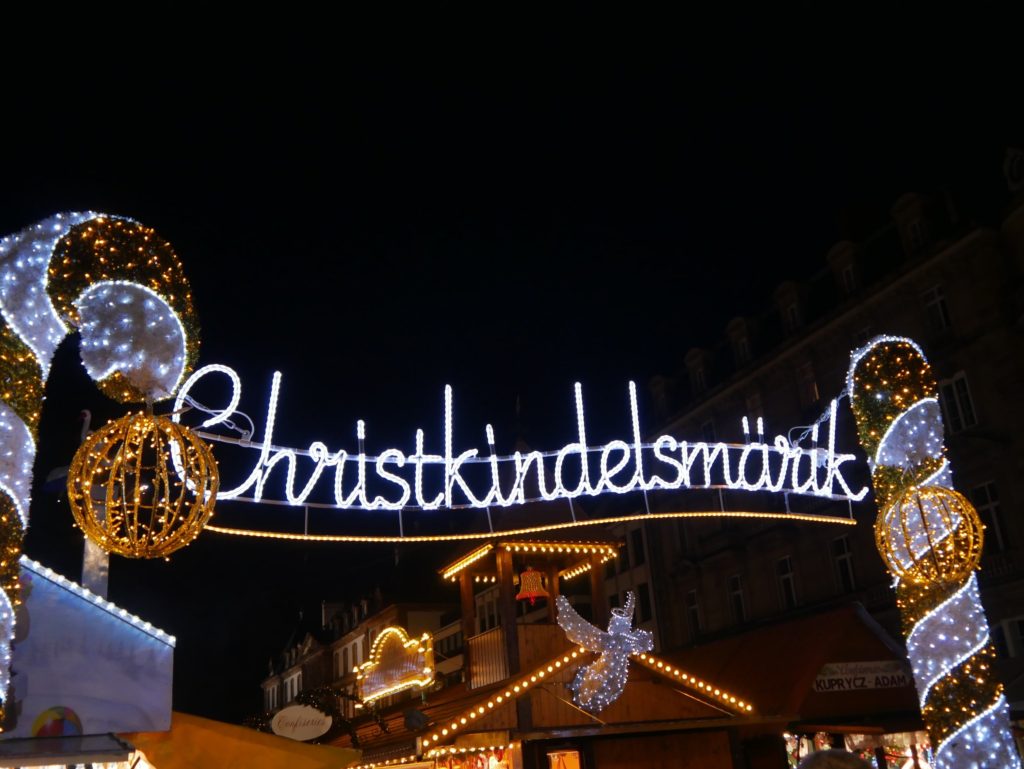
How to plan a European Christmas Road Trip Itinerary
There are multiple components to think about when planning a European Christmas Market road trip itinerary. Home to 44 interesting and unique countries, Europe covers a large area and choosing where to go can be overwhelming. December is one of the best times to visit as the continent overhauls itself into a festive winter wonderland. Touring through Central Europe’s most charming Christmas Markets can be one of the best ways to get into the Christmas spirit. We’ve created 4 easy steps to help you plan the perfect European Christmas Market road trip itinerary.
Time needed: 1 week.
When to go: Late November-December when the Christmas Markets are open.
Weather: Cold.
Currency: Euro.
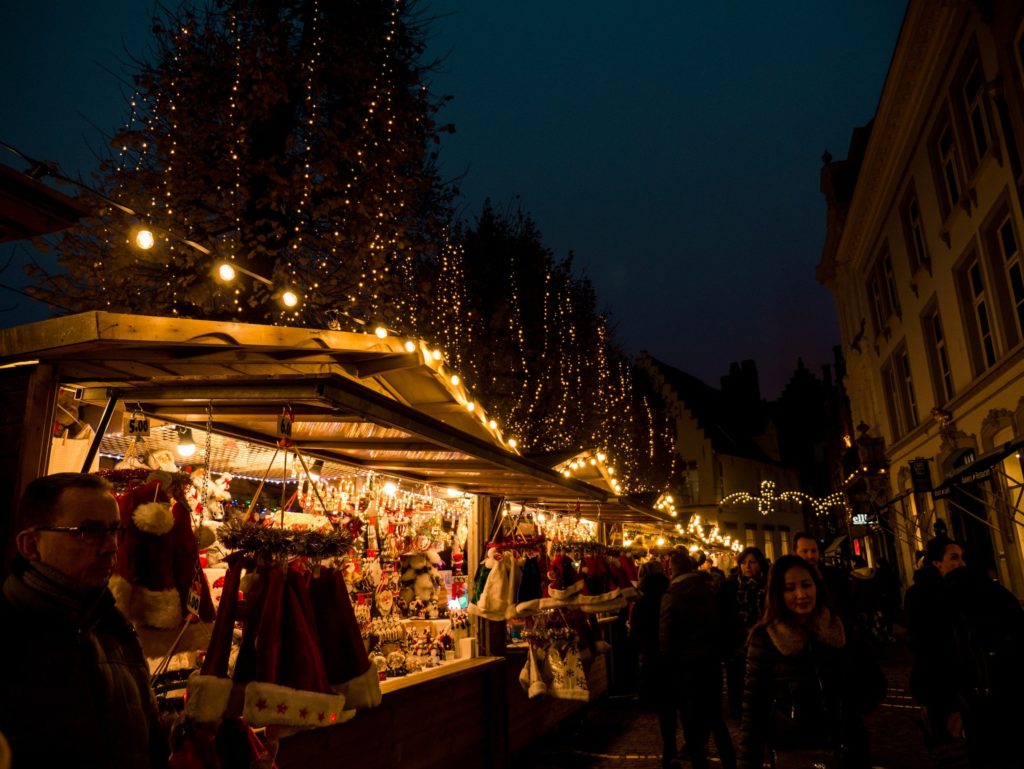
1) Choose your destinations
A lot of people who have never visited mainland Europe before (and even those who have) underestimate its size. At 10.53 million km², Europe is a huge continent. There are far too many European countries to fit into one trip and countless cities to explore too. So how do you decide where to go? Whittling your list down to only a few destinations can be difficult. You need to balance seeing as much as possible in the time available and giving yourself enough time to do each place justice.
A typical rule of thumb for visiting a European city is that you can normally hit all the main points of interest in 1-2 days. Some cities are larger than others, particularly capital cities, but up to 2 days gives you a good flavour of a place’s culture and time to see all the main sights. This means you can realistically include up to 6 cities in a week long European road trip. These can be in as many countries as you like, but logistically will depend on distances and borders. Planning a route through multiple conjoining countries can help you maximise the diversity of your trip. On the other hand, you could choose just one or two countries to really get a feel for a place by staying for multiple days.
You’ll likely choose your destinations based on where you’re starting from. For most, this will be a capital city, such as London, Paris, Berlin, Brussels or Amsterdam. Western Central Europe is the most easily accessible from these destinations, encompassing Northern France, Belgium, Luxembourg, Western Germany and The Netherlands. Using these 5 countries as a shortlist can be a good starting point for planning a European Christmas road trip.
The first thing you need to do is plot the major cities you’re interested in visiting and list your priorities.
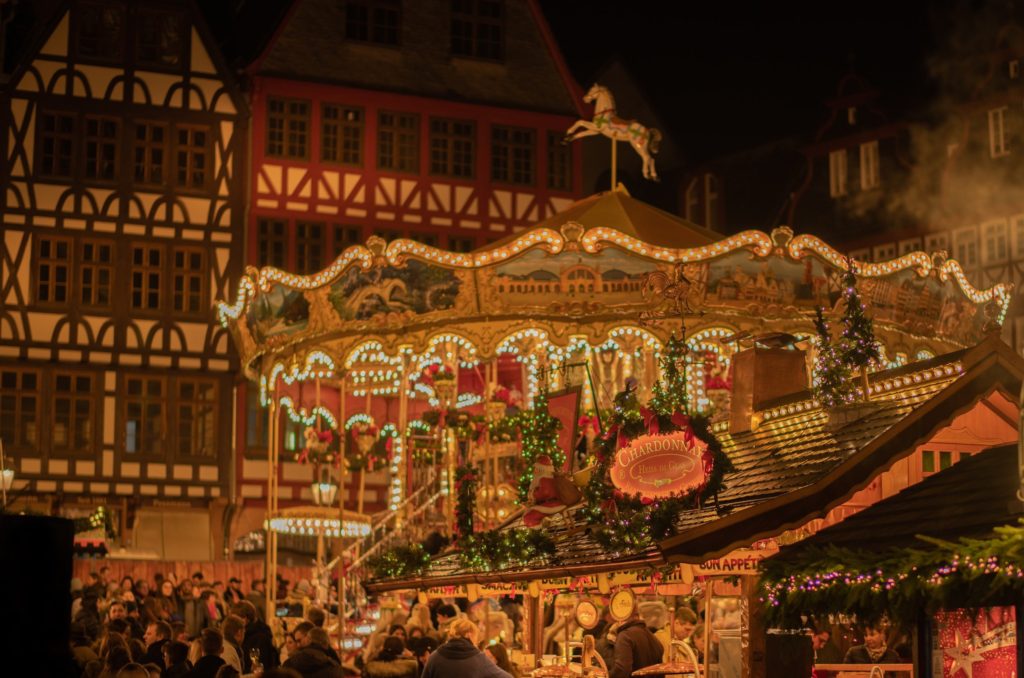
2) The best Christmas Markets in Europe
Europe is world-renowned for its Christmas Markets and is probably the most festive place in the world to visit around Christmastime. Most towns and cities in Europe have a Christmas Market. Some run from November through to January, while others are only open in the weeks just before Christmas. The larger cities, particularly capital cities, are more likely to have longer-running Christmas Markets (although these will likely be busier and more expensive too). Europe is also home to lots of interesting cites with rich histories and attractions. Balancing a mix between Christmas festivities and traditional sightseeing activities is recommended for a well-balanced trip.
Europe is home to some of the most famous Christmas Markets in the world. Vienna, Salzberg, Budapest and Prague all top the list of best European Christmas Markets. While Germany is one of the best countries in Europe for Christmas Markets, as many of the holiday’s traditions originated there. Nuremburg, Dresden, Leipzig and Berlin are also popular German Christmas Market towns.
The issue is that these iconic Christmas Markets are spread far and wide across Europe. Visiting them all in one week would be difficult without spending the whole trip in the car. To get the most out of your European Christmas Markets road trip, you’ll need to shortlist the destinations that you can easily drive between in one week. This means condensing your search into a smaller geographical area and maybe even choosing smaller towns. We’d recommend focussing on Western Central Europe, which has a huge variety of cities to choose from across 5 countries (Northern France, Belgium, Luxembourg, Western Germany and The Netherlands). Visiting lesser known Christmas Market cities in Europe can also yield the advantages of being less busy and less expensive. We’ve listed 24 of the best cities in Western Central Europe in the next section to help you get started.
Read next: Prague’s Best Eco-friendly Hotel: Botanique
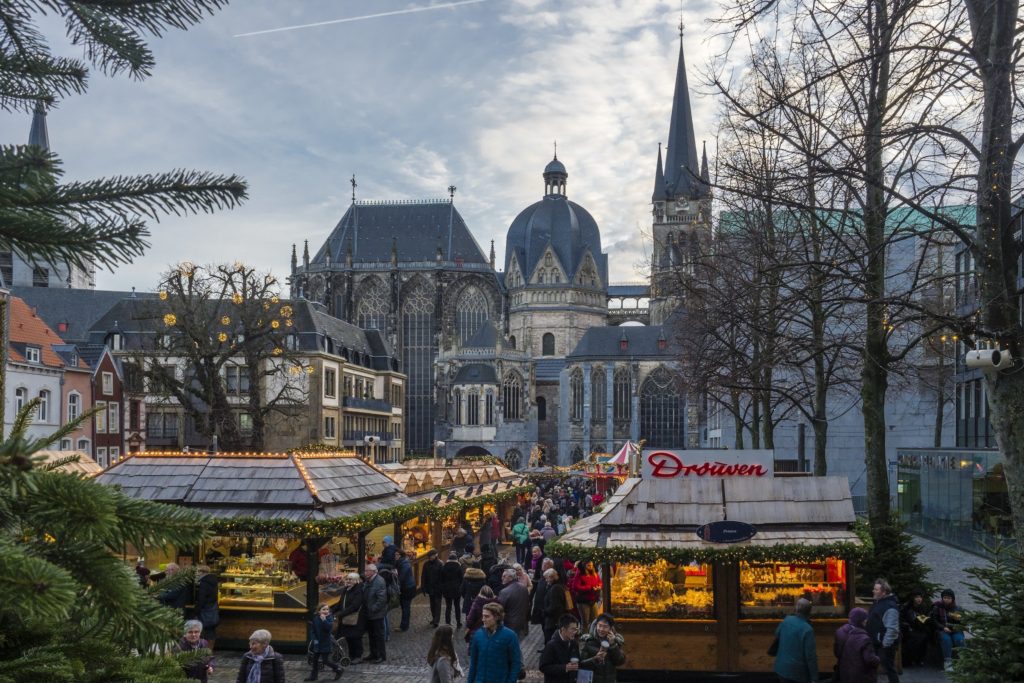
The 24 best cities in Western Central Europe
Northern France
1) Amiens – Located in northern France, Amiens is divided by the Somme river and known for its Gothic Cathedral and Medieval Belfry. Floating market gardens (hortillonnages) can be found on the city’s canals, while the Christmas Market has been held every year since 1997.
2) Arras – Arras is most well-known for its military history. A network of quarry tunnels (The Carrière Wellington) can be found under the city and were used by soldiers during WWI. While the Canadian National Vimy Memorial lies north of the city. The town boasts cobbled streets, buildings with Flemish facades, a Town Hall and Belfry. Arras’ Christmas Market is the biggest north of Paris and features over 140 artisans and exhibitors.
3) Cambrai – Known as the Duke of Wellington’s headquarters for the British Army of Occupation from 1815 to 1818, Cambrai is a small city near the German border.
4) Colmar – Located in north-eastern France near the border with Germany, Colmar features a picturesque Old Town with cobblestone streets and half-timbered medieval and early Renaissance buildings. Colmar has six Christmas markets to choose from, as well as a Gothic 13th-century church and the Unterlinden Museum, which houses the Isenheim Altarpiece. Colmar is on the Alsace Wine Route, making it a firm favourite with wine lovers who stop to try local Riesling and Gewürztraminer wines.
5) Douai – Known as the City of Giants, Douai is a small city in northern France known for the region’s most impressive belfries. Douai is home to Douai Abbey, a Roman Catholic monastery founded in Paris in 1615, uprooted by the Revolution and finally returned to England in 1903.
6) Laon – Laon is a hill-top city with a dramatic cathedral at its centre. The city is encircled by walls and was once the capital of the Carolingian Empire in the early middle ages.
7) Lille – Situated near the border with Belgium, Lille is a cultural hub and bustling university city. Its historic centre, Vieux Lille, is known for 17th-century houses, cobbled pedestrian streets and a large central square. Lille is easily accessible from the UK at only 1hrs 30min on the Eurostar from London St Pancras.
8) Reims – The unofficial capital of the Champagne wine-growing region, Reims is known for its grand cathedral with stained-glass windows and Gothic carved portals, including the Smiling Angel. For more than 1,000 years, French kings were crowned here. Reims Christmas Market is the 3rd largest Christmas market in France with over 135 stalls offering regional specialities, crafted products, souvenirs and food and drink items.
9) Strasbourg – Strasbourg is the formal seat of the European Parliament. Its proximity to the German border has resulted in culture and architecture blending of German and French influences. Possibly the best Christmas Market in Europe, Strasbourg’s Christkindelsmärik features over 300 wooden huts, spread around different squares in the city.
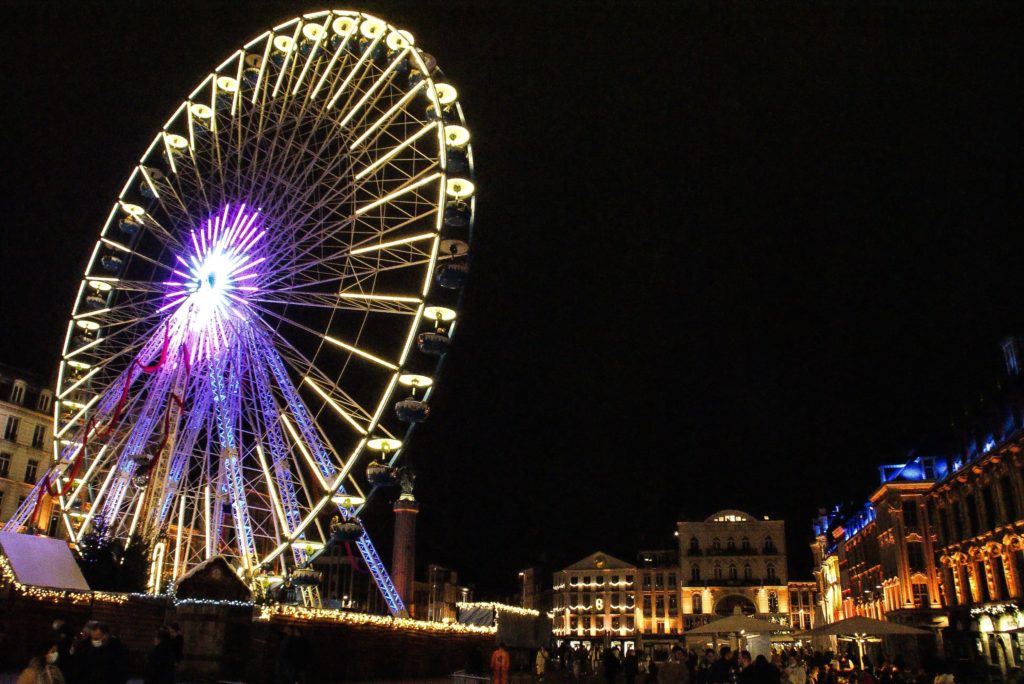
Belgium
10) Antwerp – Antwerp is a port city in Belgium known for its centuries-old Diamond District that houses thousands of diamond traders, cutters and polishers. With history dating to the Middle Ages, Antwerp is home to Flemish Renaissance architecture and the 17th-century Rubens House, period rooms which display works by the Flemish Baroque painter Peter Paul Rubens. The Christmas Market boasts over 90 stalls, as well as an ice-skating rink, miniature golf, winter bar and giant Ferris wheel.
11) Bruges – One of Europe’s most romantic cities, Bruges is renowned for its canals, cobbled streets and medieval buildings. The 14th-century City Hall and 13th-century Belfry overlook the main Christmas Market, which features an ice rink and numerous wooden chalets. In Winter, Bruges is transported into a Winter Wonderland as the annual Winter Glow Festival takes over the city.
12) Brussels – The capital of Belgium, Brussels is known for being the administrative centre of the European Union, as well as housing numerous historical and architectural landmarks, some of which are UNESCO World Heritage Sites. In winter, Brussels’ Winter Wonders event covers the city with festivity. Wooden chalets, pop-up bars and restaurants span over a mile (2km), while families can enjoy the Ferris wheel or merry-go-round. Brussels is easily accessible from London via the Eurostar, which takes less than 2 hours.
13) Ghent – Ghent is a strong contender with Bruges for most picturesque Belgian town. With a Medieval history and impressive cathedral, Ghent is a popular Christmas getaway destination. The Christmas Market is fun for all the family, with more than 150 wooden huts, Ferris wheel and merry-go-rounds.
Read next: The Thorough Guide to Bruges
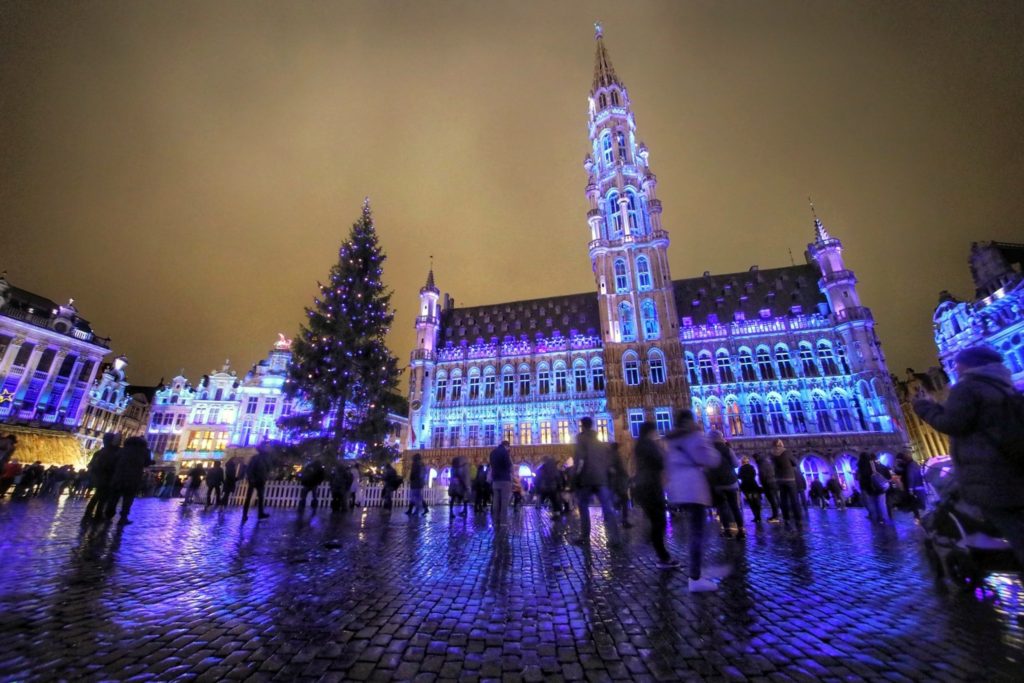
Luxembourg
14) Luxembourg City – The capital of a small European nation of the same name, Luxembourg City is known for ruins of medieval fortifications, dramatic cliffs and sweeping views. The annual Winter Lights Festival illuminates the city with Christmas cheer and visitors can enjoy Christmas stalls, food and drink, a Ferris wheel, miniature train, concerts, workshops and shows for children.
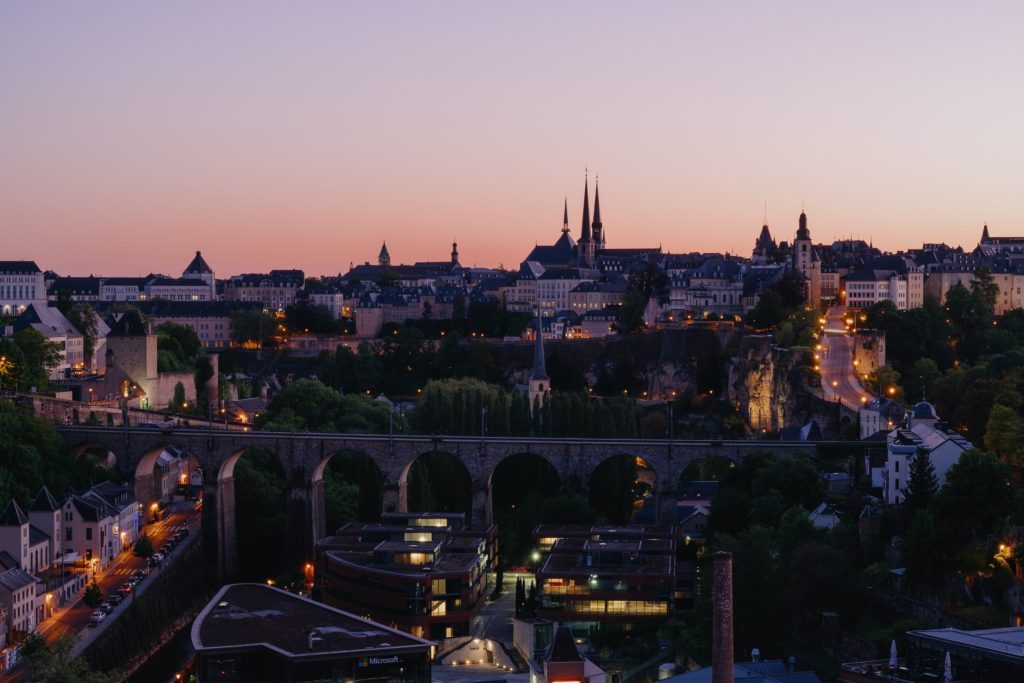
Western Germany
15) Bonn – Located in western Germany, Bonn is known for Beethoven House, a memorial and museum honouring the composer’s birthplace. The Christmas Market runs for over a month and visitors can shop for locally-produced souvenirs, as well as exploring Bonn Minster, the old City Hall or Poppelsdorf Palace.
16) Cologne – Famed for its twin-spired, Gothic Cathedral, Cologne is over 2000 years old. Tourists can explore the lavish Christmas huts, browsing crafts, souvenirs, jewellery, toys and tasty treats. Art lovers should visit Museum Ludwig, which showcases 20th-century art, including many masterpieces by Picasso. While the Romano-Germanic Museum houses Roman antiquities.
17) Düsseldorf – Düsseldorf is known for its fashion industry and art scene. The city is split into two, with the Old Town on the east bank and modern commercial areas lying to the west. Visitors can explore the 13th century St. Lambertus Church and Schlossturm (Castle Tower) or wander streets lined with boutique shops, including Königsallee and Schadowstrasse. Known as the fairytale market, Düsseldorf Christmas Markets are unique. Each market has a different theme and the wooden huts are topped with characters from the Brothers Grimm fairy-tales.
18) Frankfurt – Frankfurt is a large German city and major financial hub, home to the European Central Bank. Known as the birthplace of writer Johann Wolfgang von Goethe, much of the city was damaged during World War II. The reconstructed Old Town is the site of Römerberg, the square that hosts the annual Christmas market. Featuring a huge Christmas tree, these markets are the perfect place to buy a mulled wine or roasted chestnuts and watch the chiming of Frankfurt’s Church Bells.
19) Monschau – Located, near the Belgian border, Monschau has a picturesque Medieval centre, with half-timbered houses and narrow cobblestone streets. The hill-top Monschau Castle looks over the city and often hosts open-air concerts. Monschau not only hosts the traditional German Christmas Market stalls but also boasts a House of Christmas. Throughout the months of March to December, the House of Christmas offers Christmas decorations for sale on all 3 floors. Christmas carols played by various music ensembles can be heard around every corner and visitors can also explore The Red House, the 1752 home of a local and wealth cloth manufacturer, featuring lavish period furnishings and a carved, winding oak staircase.
20) Rothenburg ob der Tauber – Rothenburg ob der Tauber is a German town located in northern Bavaria. Featuring Medieval architecture, half-timbered houses and cobblestone lanes, the Old Town is home to the annual Reiterlesmarkt (Pre-Christmas Market). Visitors can also climb the Town Hall tower for panoramic views of the city, or explore the town walls, which include many preserved gate houses and towers, plus a covered walkway on top.
21) Trier – Located in the Moselle wine region, near the Luxembourg border, Trier is one of the most underrated cities in Germany. Founded by the Romans, the city contains numerous well-preserved Roman structures including the Porta Nigra gate, the ruins of Roman baths, an amphitheatre just outside the centre and a stone bridge over the Moselle River. With over 95 Christmas stalls, the Christmas Market features a daily festive programme against a backdrop of the imposing Trier Cathedral.
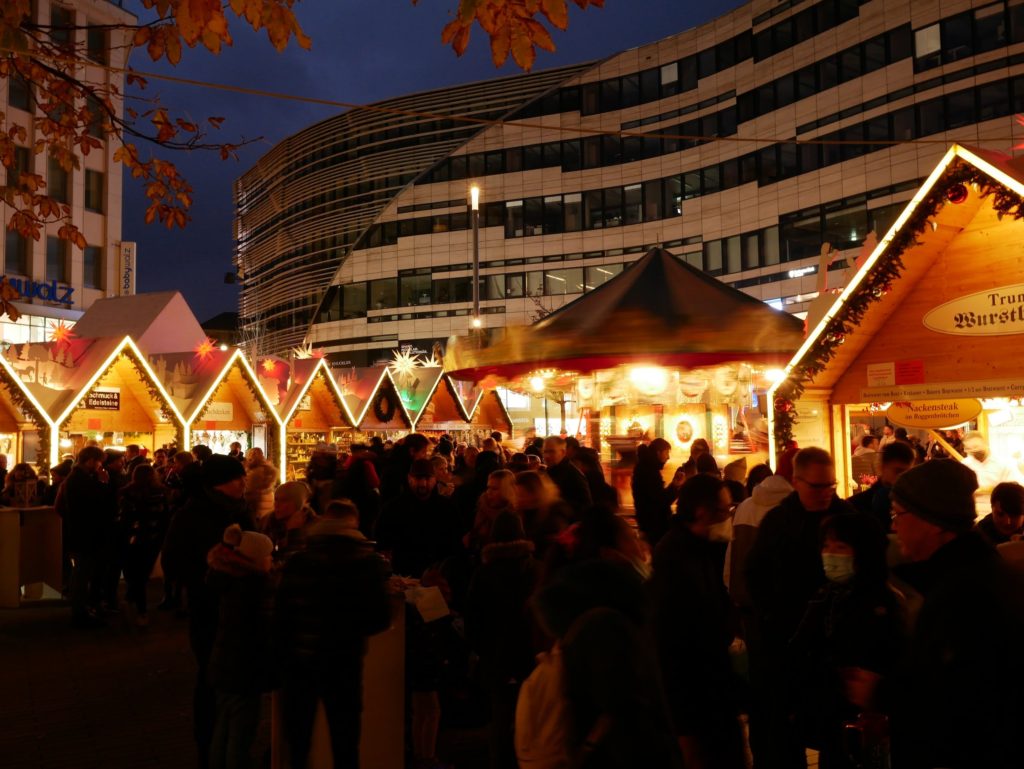
The Netherlands
22) Rotterdam – Located in south Holland, Rotterdam is a port city with a Maritime Museum featuring vintage ships and exhibits, as well as the 17th-century Delfshaven neighbourhood, Pilgrim Fathers Church and Erasmus bridge. Home to the Dutch Royal family, Rotterdam welcomes visitors, who can enjoy several Christmas Markets, as well as a Finnish Christmas Shop.
23) Amsterdam – The capital of The Netherlands, Amsterdam is famed for its intricate canal network, as well as numerous bike paths, the Van Gogh Museum, the Rijksmuseum (which houses works by Rembrandt and Vermeer) and modern art at the Stedelijk. There are numerous Christmas Markets throughout the city with the largest market next to the skating rink on Museumplein. The Winter Paradise Festival transforms the city with the Ice*Amsterdam Village featuring an ice rink.
24) Utrecht – Utrecht is a charming university city, known for its medieval centre, tree-lined canals, Christian monuments and Domtoren, a 14th century bell tower with sweeping city views, as well as the Gothic Cathedral of St. Martin on central Domplein square.
Read next: The 10 Best Things to do in The Netherlands
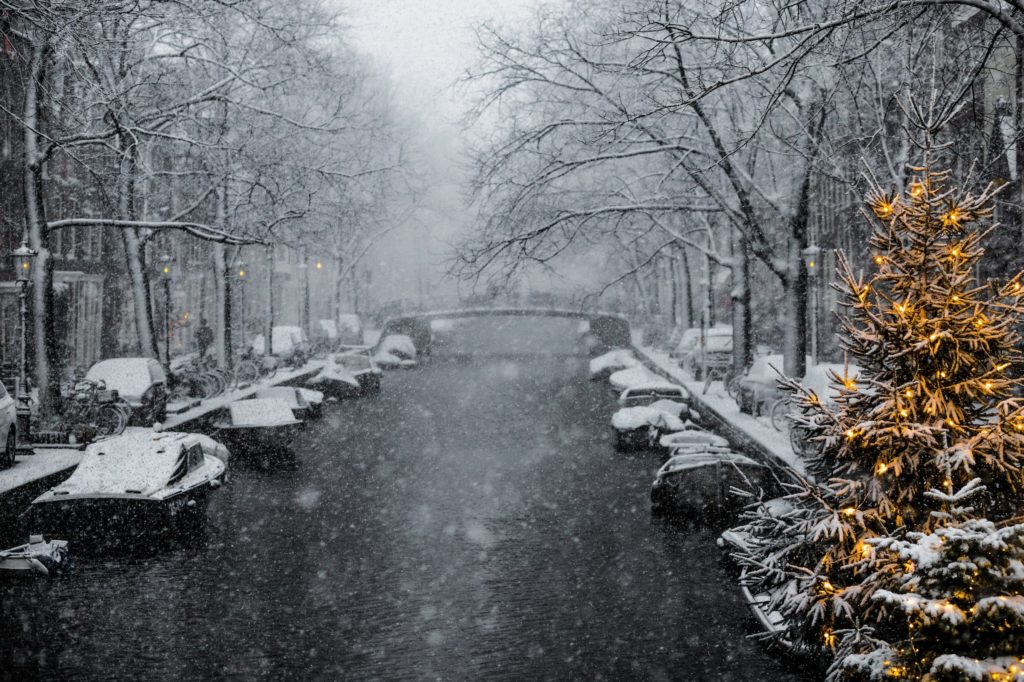
3) Choose the things you want to see in each city
Once you’ve got a rough plan of the countries and cities you want to cover, it’s time to plan what you want to see. Google Maps is a great resource which allows you to save locations as pins, plot routes and plan your own walking tours of a city. GPS My City is also a fantastic resource, which gives detailed information on all the major (and not so major!) sights in each city, and provides suggested walking routes as well as letting you design your own. DIY walking tours can be a great way to see a new city and are free too! Most Europeans cities are walkable, or have an Old Town that is walkable, so this is a great way to see your main points of interest in one day.
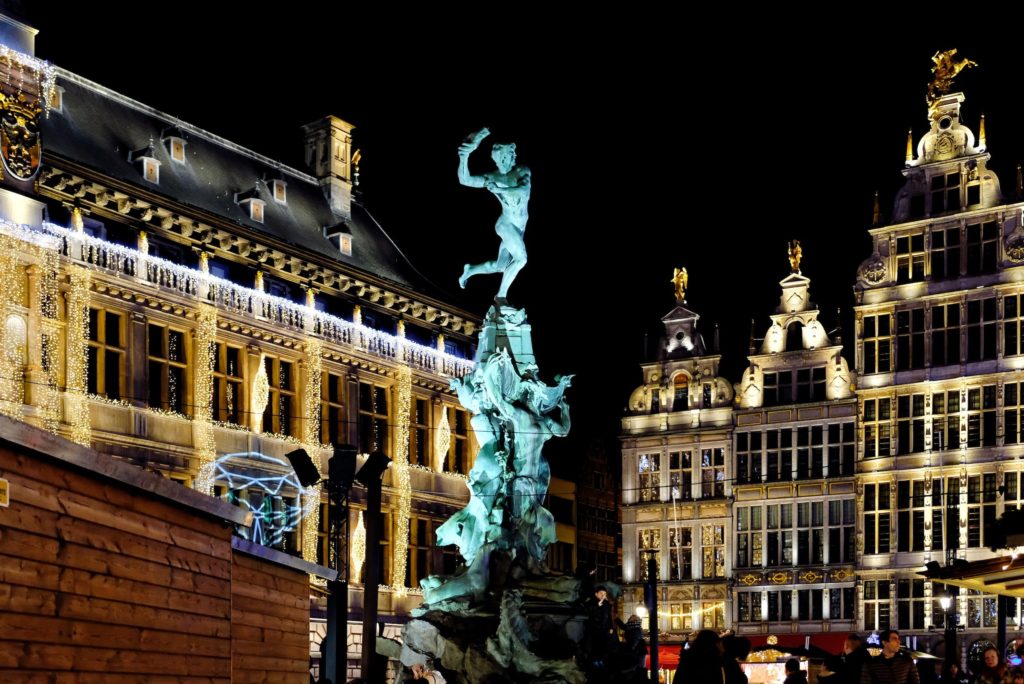
4) Planning the route
After shortlisting your locations and mapping out your points of interest, the next step is to solidify your plan and work out how to get there.
Looking at the locations on a map will give you a good idea of the natural order in which to visit each place (and how much you can fit into the time available), although there are other considerations.
Do you own car or are you going to hire a car?
It is possible to drive a car from the UK via the Eurotunnel. If this is your plan, your first and last night may need to be close to Calais.
Hiring a car can allow you to start and end in different places (even different countries). Hire cars are easily rented at most international airports, but there can be quite substantial surcharges for dropping off in a different country to the one you picked up in, so bear this in mind.
You can find out more about getting to and from Europe later in this article.
Daily driving time
The last thing you want is to plan your trip and then spend all your time in the car. It’s preferable to plan to spend no more than 3 hours driving each day. You can do this by making the most of the excellent European motorway network which will get you quickly from A to B. Alternatively there are some beautiful scenic routes, but it is worth considering the unpredictable European winter weather, which is very variable – it can be anything from sun through to rain, sleet, snow and dense fog! You can read more tips for driving in Europe at the end of this article.
Seeing the city by day or by night
By day, a city may be beautiful but by night it can be truly magical! You don’t have to do everything all in the same day. Some people prefer to see a city first by night, and then in daylight the following morning.
Winter days are short – typically light from 8:00 to 16:00. Maximise your daylight sightseeing hours by travelling after dusk. This does mean you end up travelling in the dark, so get no drive-by views, but that’s not a problem if you are using motorways which typically traverse less attractive landscapes anyway. Travelling after dusk can also mean you might hit rush hour traffic, although it tends to be more busy coming out of a city than going in on an evening.

Suggested destinations
We’ve created a suggested European Christmas Market road trip itinerary below, which is the perfect mix of culture, history and Christmas. It visits 5 of Europe’s most beautiful cities, without rushing. The 5 cities we’d recommend visiting are:
- Bruges
- Ghent
- Luxembourg City
- Strasbourg
- Trier
These are all destinations that are not too far to drive between, minimising journey times and maximising sightseeing. This itinerary gives you a good mix of European culture, including gothic architecture, Medieval canals, picturesque landscapes, ancient history and of course, festive Christmas Markets. It’s also a flexible itinerary with suggested detours, giving you the opportunity to add destinations including:
- Eguisheim
- Riquewihr
- Colmar
- Waterloo
- Monschau
- Brussels
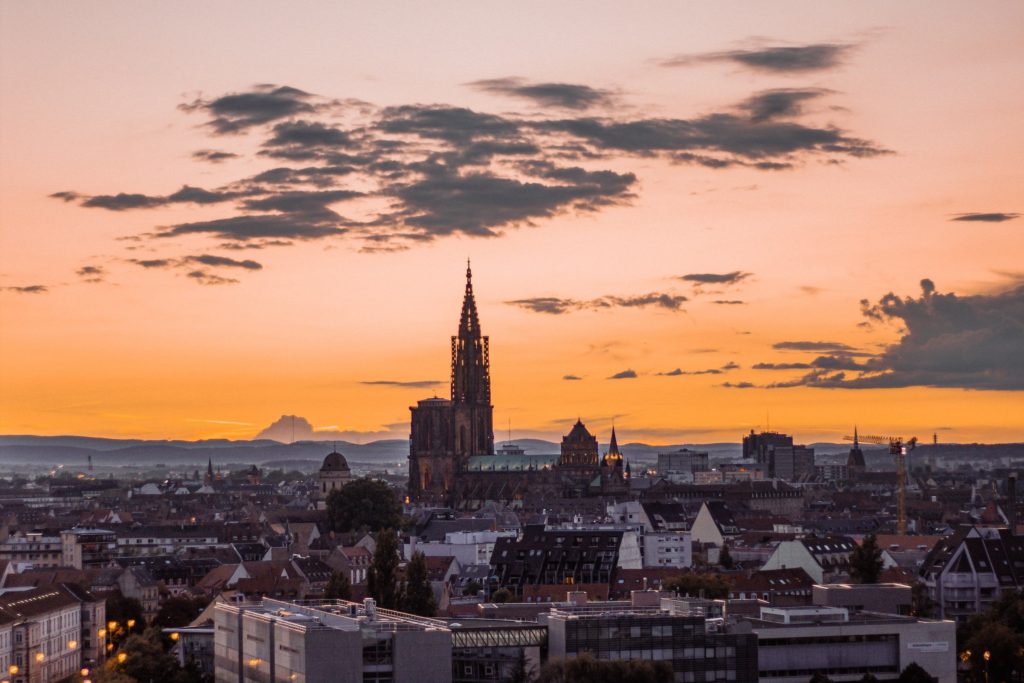
Interactive Europe Christmas Markets Road Trip Map
Northern Europe Christmas Road Trip Itinerary
Day 1 – Travel to Ghent
Ghent describes itself as Europe’s Best Kept Secret, and it’s not wrong. Boasting a history that goes back to the Middle Ages, with architecture to match, Ghent is one of the most beautiful cities in Belgium. The compact old city centre has a canal network and is packed with historical buildings including churches and castles, as well as lots of great places to eat and drink. The Gravensteen Castle is not to be missed, while the Graslei (row of harbourside guildhalls) makes for a perfect photo. As you pass the dramatic Cloth Hall, look up to the top windows and spot people fencing at the world’s oldest fencing club! See the city by night for a festive experience. During winter all the old buildings are illuminated until midnight, making wandering the narrow streets a magical experience. The Christmas markets are fun for all the family, with a Ferris Wheel, vintage merry-go-round, Moose bar and Children Village to boot.
Taking a boat tour is one of the best activities in Ghent. This is a great way to see the city and hear fascinating commentary from the skipper. Be aware that in winter the boats open from about 10:00 and may not run in bad weather. Climbing the Belfry for the superb views of the city is one of the best things to do in Ghent and shouldn’t be missed. You only need to take the stairs for the first couple of floors as beyond that there is a lift to the top.
Christmas Market Location: From Sint-Baafsplein Square to the end of Korenmarkt.
Christmas Market Dates: The second week of December to New Year’s Eve.
Key things to do:
- Gravensteen Castle
- Climb the Belfry
- Cloth Hall
- Saint Bavo’s Cathedral
- Saint Nicholas’ Church
- Ghent City Museum
- Boat tour on the canal
The best sightseeing tours in Ghent: One of the best ways to learn about a new city in a short amount of time is on a walking tour. You can book onto a Private 2-Hour Walking Tour with a local guide to see the main attractions in Ghent, including the medieval city centre, Gravensteen Castle, Graslei and Korenlei. You’ll learn a lot through informative commentary, orient yourself and pick up local bar and restaurant recommendations too. Themed guided walks are very popular, with a Beer and Sightseeing Adventure and Small-Group Chocolate Tour also available. Foodies can even book a Guided City Food Tour which includes food and drink tastings of local cuisine. While those who like to be a little more active, should consider joining a Guided Urban Bike Tour.
Where to stay:
Budget: Hostel Uppelink
Mid-range: Hotel Astoria Gent
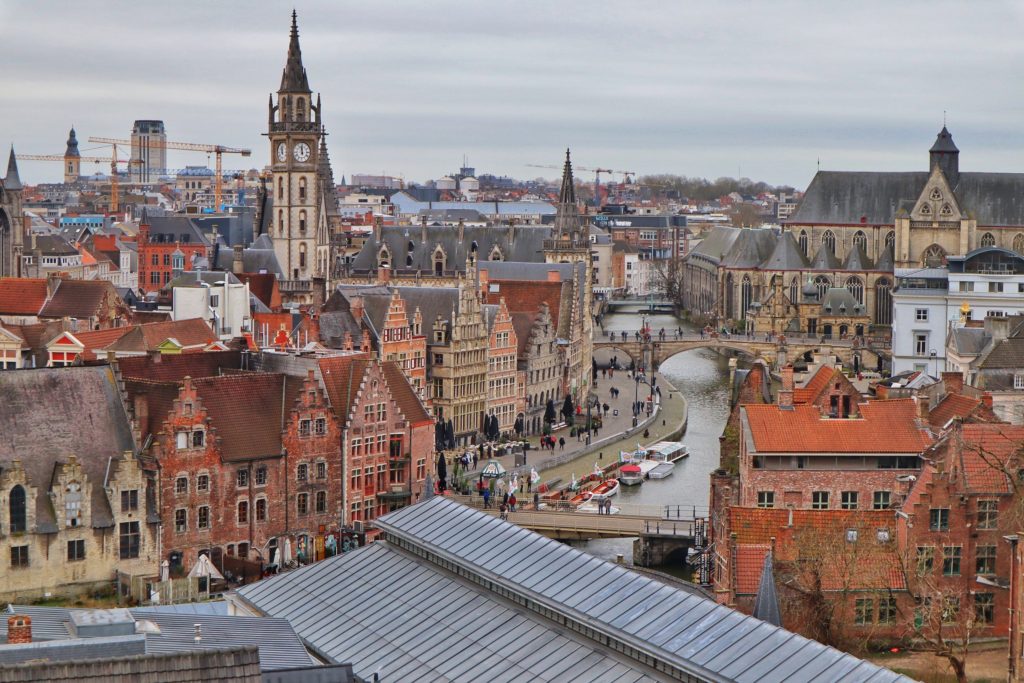
Day 2 – Ghent to Luxembourg City
Bordered by Belgium, France and Germany, Luxembourg is a small European country that many visitors miss. The capital, Luxembourg City (Ville Haute), is perched atop sheer cliffs and separated from the newer city by a deep river valley. As a truly strategic position, it has changed hands many times over the centuries, and has a rich heritage which reflects this.
The annual Winterlights Festival transforms Luxembourg City into a winter wonderland. Christmas Markets spring up all across the city, while live concerts, exhibitions, performances and workshops for kids are held in various venues. The Christmas Market stalls feature Christmas decorations, handicrafts, toys, clothes, jewellery, sweets, drinks and all sorts of food, and are particularly beautiful at night. Those who wish to learn more about the city’s festive traditions can join a Guided Magical Christmas Tour.
While you’re in the city, wander through the Old Streets and admire the views from the Bock Casements (defensive tunnels cut into the cliffs). The impressive Cathédrale Notre-Dame is not to be missed, while art lovers should head to the National Museum of History and Art.
The superb new and free tram service makes it easy to get around, while a lot of the city is walkable. The City Line Bus Tour is a popular way to see the city in a limited amount of time, with 4 tours per day and a ticket valid for 24 hours.
Accommodation in the old city is limited (and expensive), but you can very easily stay in the new city and travel in by tram. Public transport is cheap and easy to use, and recommended as the one-way system can be congested and parking near the old city can be tricky too.
Christmas Market Location: The main market is at Place d’Armes, with other events in Place de la Constitution, Kinnekswiss, Place de Paris, the courtyard of the Old Athénée and Champ du Glacis.
Christmas Market Dates: Mid-November to early January.
Key things to do:
- Palais Grand-Ducal
- Bock Casemates
- Cathédrale Notre-Dame
- Panoramic Elevator of the Pfaffenthal
- Musée national d’histoire et d’art Luxembourg
- Constitution Square
The best sightseeing tours in Luxembourg City: Those looking to get into the festive spirit should join a Guided Magical Christmas Tour to learn more about Luxembourg’s history and traditions. Alternatively, taking a Guided City Walking Tour with Wine is very popular and takes in Luxembourg City’s main sights, including Constitution Square, Place Guillaume II, Place d’Armes and Grand Ducal Palace. Those looking for a little more adventure can join a Guided E-Bike Tour, an eco-friendly way to see the city’s highlights. While those who wish to do less walking can enjoy the sights on a double decker bus as part of the City Line Bus Tour.
Where to stay:
Budget: Luxembourg City Hostel
Mid-range: DoubleTree by Hilton Luxembourg
Luxury: Hotel Le Place d’Armes
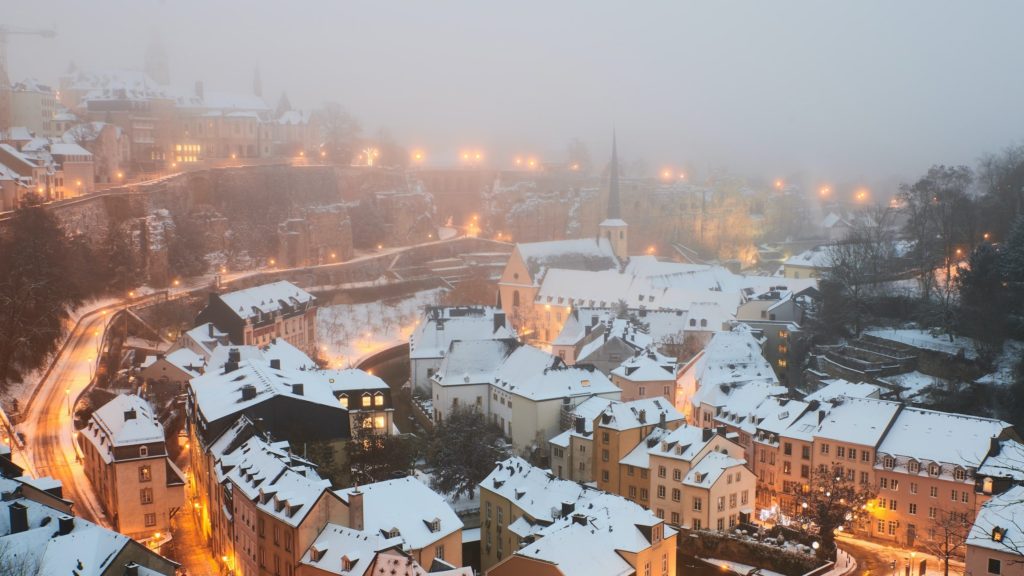
Day 3 – Luxembourg City to Strasbourg
As the self-designated Capital of Christmas, Strasbourg has been hosting a Christmas market in Place Broglie since 1570. And what a market it is! Christmas lights and decorations adorn every building, an enormous Christmas tree pops up in Place Kléber and over 300 Christmas stalls can be found in every square (and there are lots of squares!). It’s no wonder that more than 2 million people visit Strasbourg Christmas Market (Christkindelsmärik) every year. Couple this with the fact that it is a truly beautiful city, and it’s easy to see why Strasbourg is top of many people’s Europe Christmas Markets list.
While Strasbourg may be French, its proximity to the German border and turbulent history has resulted in a mix of culture and architecture that has both German and French influences. The city became French after the conquest of Alsace in 1681. It was then taken back by Germany after the Franco-Prussian War in 1871 until the end of World War I in 1918 saw it revert back to France. Today, visitors can visit the Gothic Cathédrale Notre-Dame which features daily shows from its astronomical clock and offers sweeping views of the Rhine River from partway up its 142m (466ft) spire.
Upon arrival, the best way to orient yourself is with a guided walking tour. Explore the Historical Centre on a Private Walking Tour or jump straight into the festivities with a Christmas Market Tour. Those looking for a unique perspective should consider joining a 1.5-Hour Guided Segway Tour, which is fun for all abilities. While foodies will love a Traditional Food Group Walking Tour, which introduces you to the city’s highlights and stops to sample traditional delicacies and drinks.
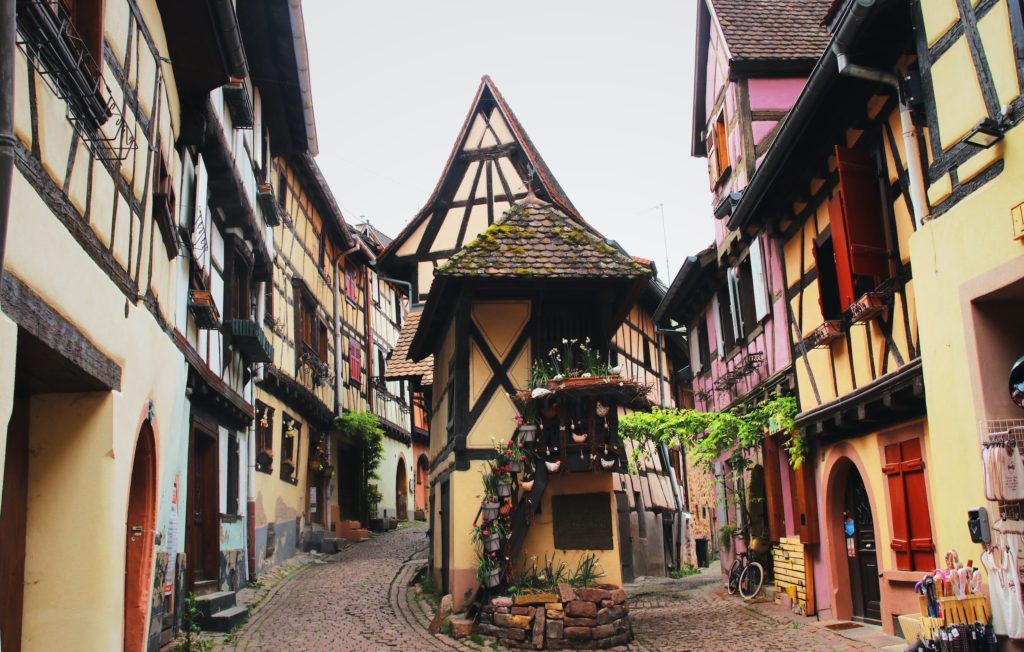
Day 4 – Strasbourg (and the Colmar/Alsace region)
Strasbourg is a beautiful spot and, as the Capital of Christmas, deserves a full day on this European Christmas Market road trip itinerary. Start your day with a Batorama Boat Tour, a large glass-topped boat. Cruising around the city is a great way to orient yourself. Make sure you book the longer tour, which will not only take you into the picturesque Petite France but will also show you the more modern districts, including the European Parliament, whilst giving an insightful commentary into the turbulent history of this town on the French-German border.
Photographers shouldn’t miss Petite France, a lovely place to stroll, and so photogenic. While history buffs can head to the Historical Museum of the City of Strasbourg. If you’d like to explore the area, you can join a Full-Day Highlights of the Alsace Tour, which visits highlights of the region, including Colmar, Eguisheim, Riquewirh and Haut Koenigsbourg Castle. While a Wine Tour & Tastings from Strasbourg is the perfect way to spend the day if you’re a wine lover. This highly-rated tour explores the Alsace Wine Route, tasting local wines and visiting local villages. A Half-Day Wine Tour is also availale for those who wish to spend a little more time in Strasbourg’s centre.
The Christmas Markets are the main event. They are all located in the Old Town (Grand Ile), which is an easily walkable area encompassed by the River Ill. And of course make sure you stay until after dark, when the city lights up and the streets become truly magical. To really get in the festive cheer, consider spending the day on a Alsace Christmas Markets Tour, which visits local Christmas Market Towns, including Colmar, Eguisheim and Riquewihr.
Accommodation in Strasbourg gets booked very early and tends to be very expensive. The Park & Ride tram service, runs frequent services in and out of the city and is incredibly reasonably priced. Booking a hotel or B&B out of the city and transiting in can save you money.
Christmas Market Location: The main market is in Place de la Cathédrale de Strasbourg and Place Kléber, with others spread across Place Gutenberg, Place Broglie, Place du Château, Place du Marché aux Poisson, Place du Temple Neuf, Place Saint Thomas, Place des Meuniers, Place Benjamin-Zix, Place Grimmeissen, Advent Village at Square Louise-Weiss and Place du Corbeau.
Christmas Market Dates: The end of November to Christmas Eve.
Key things to do:
- Cathédrale Notre Dame de Strasbourg
- Palais Rohan
- St. Thomas Church
- Parc de l’Orangerie
- Ponts Couverts de Strasbourg
- Historical Museum of the City of Strasbourg
The best sightseeing tours in Strasbourg: Explore the city’s highlights and Historical Centre on a Private Walking Tour or a 1.5-Hour Guided Segway Tour. Learn more about the city’s festive traditions on a Christmas Market Tour or sample local delicacies on a Traditional Food Group Walking Tour.
Where to stay:
Budget: The People – Strasbourg
Mid-range: HANNONG Hotel & Wine Bar
Luxury: Maison Rouge Strasbourg Hotel & Spa, Autograph Collection
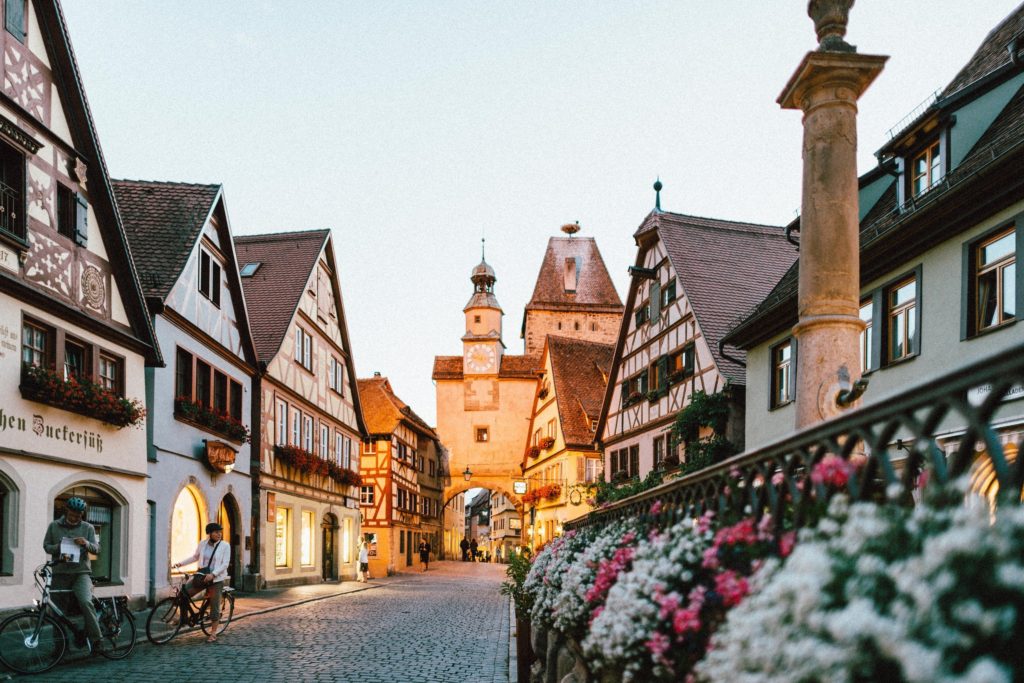
Day 5 – Strasbourg to Trier
Trier is one of the lesser well-known German cities but so worth visiting. Located conveniently between Strasbourg and Bruges, Trier has some of the best preserved Roman ruins in Europe, as well as beautiful buildings and of course a wonderful Christmas Market.
Visiting the Porta Nigra, an amazingly preserved Roman gateway to the city, is a must, while the Constantine Basilica features Emperor Constantine’s throne room, a huge and impressive building which is today used as a church. And the Imperial Roman Baths are one of three in the city, reached by a pleasant walk though the Palasgarten (Palace Gardens) and are unmissable for a history lover.
Set against the imposing backdrop of Trier Cathedral, Trier Christmas Market boasts over 95 wooden huts, selling local produce, handmade crafts, souvenirs and tasty food and drink. The romantic setting in the main square is the perfect place to grab a mulled wine and take in the twinkly fairy-lights.
Christmas Market Location: Domfreihof, the main square in front of the cathedral.
Christmas Market Dates: The end of November to just before Christmas Day.
Key things to do:
- Porta Nigra
- Kaiserthermen
- Trier Amphitheatre
- Trier Saint Peter’s Cathedral
- Palasgarten
- Liebfrauenkirche
- Rheinisches Landesmuseum Trier
The best sightseeing tours in Trier: Take a Guided City Highlights Walking Tour to learn more about Trier’s rich Roman and Medieval history. Or consider doing a self-guided outdoor-escape-game for a fun and unique way to explore the city.
Where to stay:
Budget: FourSide Hotel Trier
Mid-range: Best Western Hotel Trier City
Luxury: Park Plaza Trier
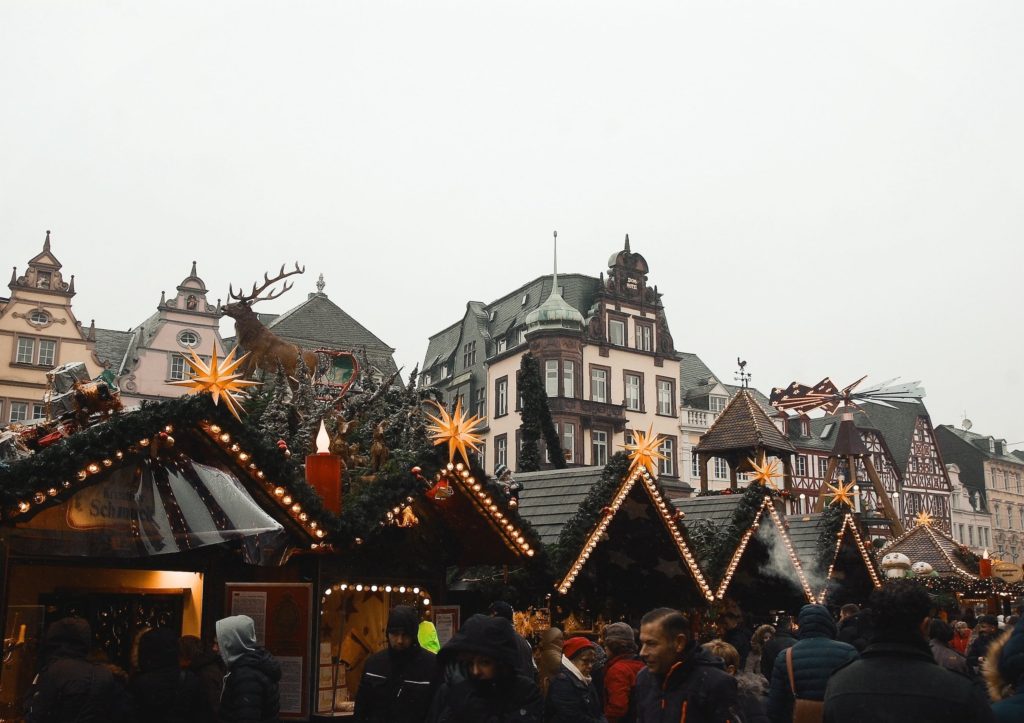
Day 6 – Trier to Bruges via Waterloo/Monschau/Brussels
As the trip comes to an end, it’s time to start heading back home. Travelling from Trier to Bruges can be done via a scenic drive through Monschau, taking in the German countryside. Brussels would make a good alternative to visit en-route, as it’s half-way between Trier and Bruges. While history lovers should stop at Waterloo, the site of the 1815 Battle of Waterloo. The battlefield site is a large, flat area, with a huge mound topped by a lion statue, as a memorial to all those who fought. You can climb the Butte de Lion (the lion monument), which was built on a man-made mound between 1823-1826. There is also a well laid out and thought-provoking museum, where you can learn more about the history of the battle through artifacts and a 3D movie.
As you arrive in Bruges, it’ll most likely be dark. This is the perfect time to head out and appreciate the magical festive lights which are part of the annual Winter Glow festival, which takes over the city in winter. Follow the Light Experience Trail, which illuminates some of Bruges’ most iconic buildings or enjoy a hot drink in the cosy winter bar pop up at the Minnewater (Lake of Love). Or take a walking tour to orient yourself. You can join a classic 2-Hour Guided Walking Tour to learn more about the city’s history, or a Dark Side of Bruges Private Evening Tour to discover mystery, dark stories, interesting facts, and the old legends of Bruges’ Medieval Centre.
Read next: The Thorough Guide to Bruges

Day 7 – Bruges
The capital of West Flanders, Bruges is known for its Medieval houses with crow-stepped gables, impressive Neogothic architecture and historic centre, which is a UNESCO World Heritage Site. Start your day with a Boat Cruise and Guided Walking Tour, taking in the highlights of this romantic city. Visit the Lace Centre to learn more about the history of lace in Bruges, or climb the 366 steps up the Belfry of Bruges (Belfort), a 13th century clock tower that stands 83 metres (272ft) high and give tourists panoramic city views. There are plenty of wet weather activities, including the Historium, Fries Museum and Chocolate Making Workshop with Chocolate Museum Entry, with museum passes available (Musea Brugge Card). While foodies can join a Belgian Beer Tour, Waffle and Beer Workshop or Private food Tour.
Overlooked by the Neogothic Provinciaal Hof (the former meeting place for the provincial government of West Flanders), Bruges’ Christmas Market can be found in the 10th century main square, Markt, as well as along Simon Stevinplein Street. Featuring a large ice rink, festive decorations and numerous wooden stalls selling unique souvenirs, Bruges Christmas Market is one of the best in Belgium, if not the whole of Europe.
Christmas Market Location: Grote Market with huts also along Simon Stevenplein street.
Christmas Market Dates: End of November to early January.
Key things to do:
- Belfry of Bruges
- Basilica of the Holy Blood
- Church of Our Lady Bruges
- Sint-Salvatorskathedraal
- Bruges City Hall
- Historium Bruges
- De Halve Maan Brewery
The best sightseeing tours in Bruges:
Orient yourself on a 2-Hour Guided Walking Tour, or discover Bruges’ darkest secrets on a Dark Side of Bruges Private Evening Tour. Those who like to stay active can join a City Highlights Bike Tour, while foodies can sample local cuisine on a Private food Tour. Give the poor ponies a break and skip the horse-drawn carriage ride, instead opting for a Guided Rickshaw Tour, a fun and cruelty-free way to see the city.
Where to stay:
Budget: Hotel Malleberg
Mid-range: The Black Swan Hotel
Luxury: Grand Hotel Casselbergh Brugge
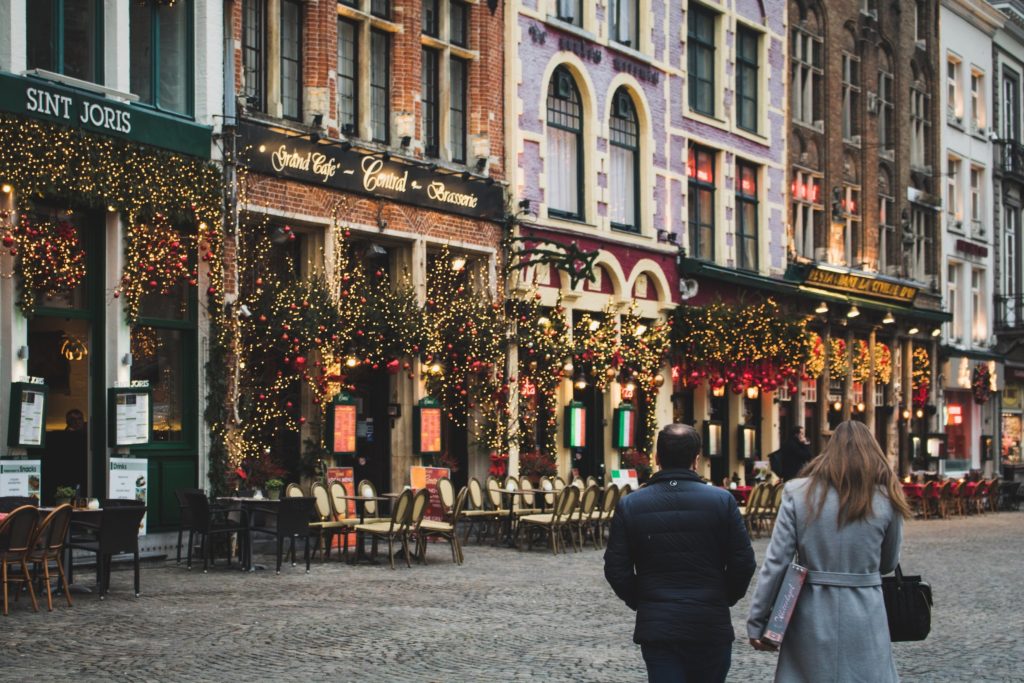
Day 8 – Travel home
You can head home at the end of day 7, or spend another night in Bruges and head home on day 8, depending on your destination. Those heading for the UK will likely spend a whole day travelling, while those going to an airport might have a shorter journey. You can find out the best, easiest and most accessible ways to transit to and from Europe in our How to get from the UK to Europe and How to get to Europe Internationally sections below.
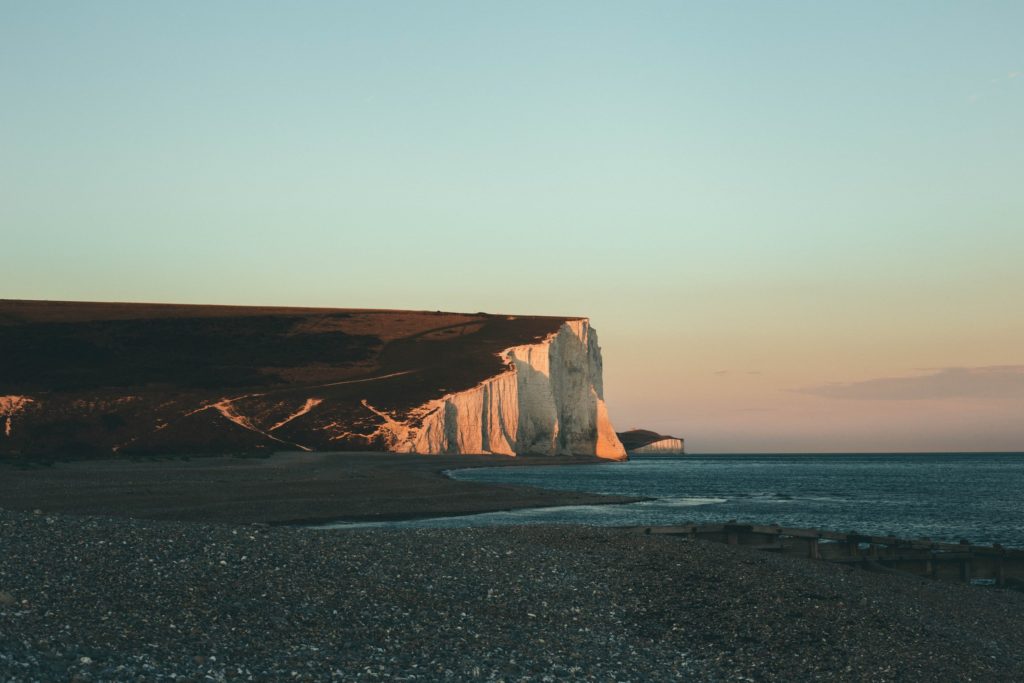
Europe Accommodation
While we’re big fans of spontaneous travel, with short trips like this it’s best to plan ahead to make the most out of your time. Christmas is a very popular time of year to visit Europe with Christmas Markets seeing hundreds of thousands of visitors each year. Accommodation therefore often books up in advance.
City centre hotels within walking distance of the main attractions are very convenient, but also very expensive, and get booked up very quickly. Many also offer parking (often at an extra cost). Bear in mind that parking can often be underground – check your car will fit the low ceilings and tight parking spaces before booking.
Renting an apartment is possible (even for 1 night) and can be a good alternative to staying in a hotel. There are also lots of great, locally-owned B&Bs in Europe.
Many cites have excellent public transport, which are often trams, so you can stay a little further out of the city and still have easy access to the centre. Websites like Booking.com or Hostelworld.com are good for initially sourcing accommodation. It’s always worth checking whether you can get the room cheaper via the accommodation’s own website.
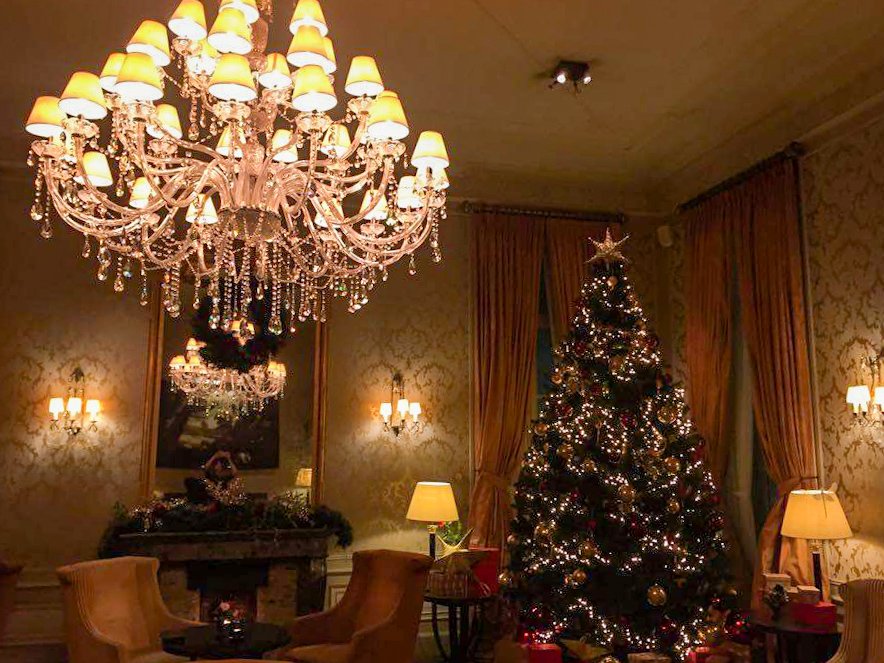
How to get from UK to Europe
For many, a trip to mainland Europe starts or ends in the UK. Or you may be an international visitor, wishing to include the UK in your itinerary. Here are the best ways to get between the UK and mainland Europe. Each route can be done without flying, which is more eco-friendly and means you can take a car too.
Ferry crossings UK to France
The Dover to Calais ferry crossing is the most popular option to get to France by boat. It takes less than two hours with up to 20 sailings a day. P&O Ferries is one of the largest providers of the route. Booking in advance can be far cheaper than leaving it to the last minute.
It’s also possible to cross from the UK to France via the following routes:
- Newhaven to Dieppe
- Portsmouth to Caen, Cherbourg or St Malo
- Poole to Cherbourg
- Plymouth to Roscoff
These routes are run by DFDS Seaways and Brittany Ferries. They’re less frequent than the Dover-Calais crossing and typically more expensive.
Ferry crossings UK to The Netherlands
It’s also possible to cross from the UK to The Netherlands.
Hull to Rotterdam is the most popular route. Run 3 times a day by P&O Ferries, the route takes around 10 hours so is popular as an overnight route. You get a cabin included in your ticket and can make the most of your days by transiting overnight. P&O often run sales between October-December where you can travel for around £50 or you can buy one get one free.
DFDS Seaways provides crossings from Newcastle to Amsterdam (Ijmuiden) which runs 7 times a day. This is a convenient option for those travelling from the north of England or Scotland. While Harwich to Hook of Holland is operated by Stena Line and runs 16 times daily.
Trains UK to France
The fastest way to get from the UK to France is by Eurostar. Leaving from London St Pancras, the Eurostar heads to Lille, Paris, Lyon, Avignon, Bourg-St-Maurice and Marseille. The shortest route (stopping at Lille) takes under 1 1/2 hours, while the last stop is 8 hours away from London.
If you wish to take your own car from the UK, it’s best to book the Eurotunnel. Running 24 hours a day, 365 days per year, with up to 7 departures per hour, the crossing takes only 35 minutes from Folkestone to Calais. Tesco Clubcard Voucher codes can be redeemed when booking the Eurotunnel, so if you save up those points you can actually get the crossing for free!
Trains UK to Belgium
The Eurostar runs from London to Brussels, which takes less than 2 hours, and Antwerp in less than 3 1/2 hours. Bruges can be accessed with a quick change at Brussels Midi/Zuid on an Any Belgian Station ticket.
Alternatively, you could take the Eurotunnel from Folkestone to Calais and then drive into Belgium.
Trains UK to The Netherlands
The Eurostar also stops in Rotterdam and Amsterdam, which takes less than 4 hours.
Buses from UK to Europe
Taking a bus is one of the most eco-friendly ways to travel Europe. Flixbus operates hundreds of routes and is our preferred method of transport in Europe, being comfortable and super affordable. It services a large number of major UK cities, with those leaving from London heading to destinations including Lille, Paris, Bruges, Ghent, Brussels, Antwerp, Cologne, Frankfurt, Rotterdam, Amsterdam and Utrecht. It’s then possible to get a Flixbus to pretty much any city in Europe. National Express also runs routes from the UK to Amsterdam, Brussels, Paris and Dublin.
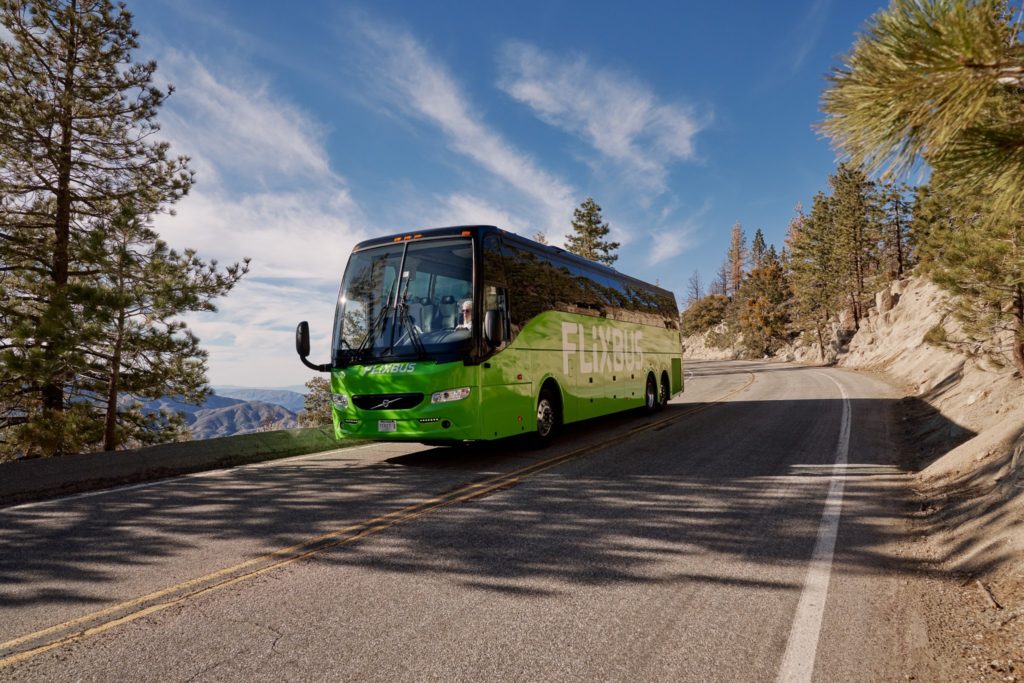
How to get to Europe Internationally
There are several major European airports that serve most international flights. Paris, Brussels, Frankfurt and Amsterdam are popular airports, due to their location being easily accessible to most of Central Europe. Typically, flights into a capital or large city are cheaper than flying a less busy route. The best time to buy flights is around 10-12 weeks before your flight date.
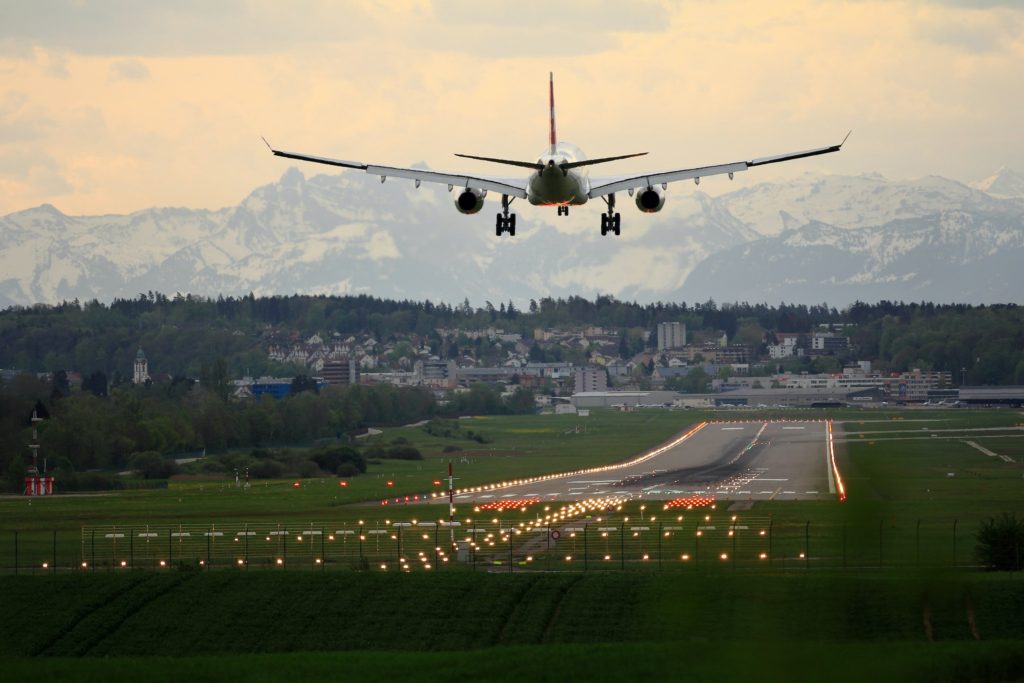
Getting around Europe
Flixbus offers hundred of routes throughout Europe and connects almost every major city. It’s super cheap and eco-friendly too. Europe has a great railway network that is affordable (although considerably more expensive than Flixbus). Tickets can be booked through Rail Europe or Trainline. If you want freedom to travel at your own pace, hiring a car is preferable.
Most European cities will be walkable, or have a walkable Old Town. Larger cities are usually served by tram networks, which are often very affordable.
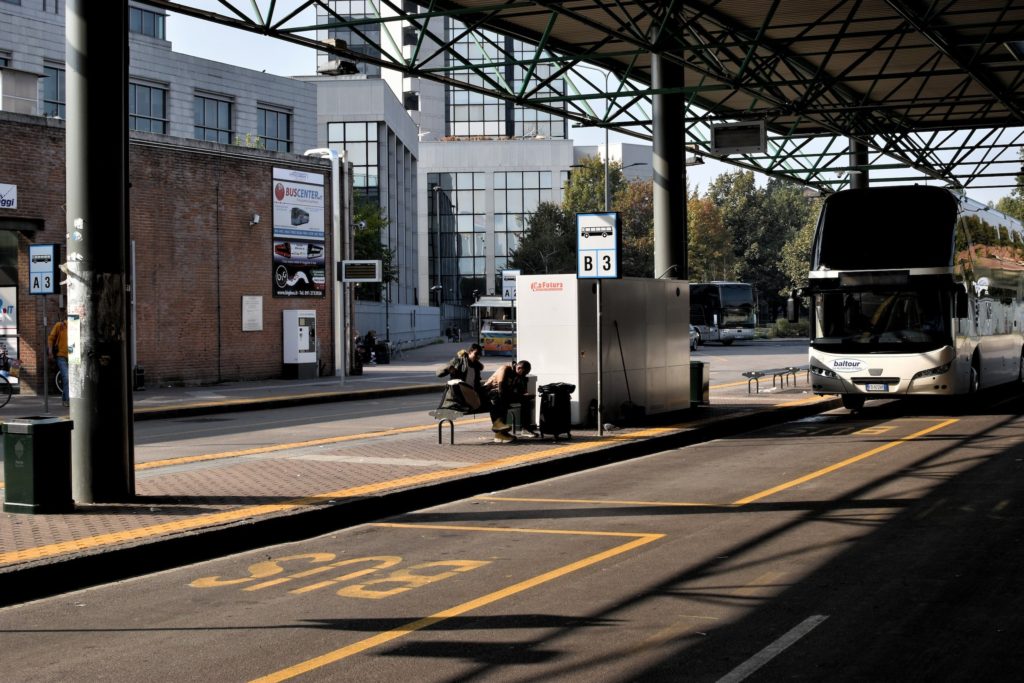
Things to Know Before You Go
If you plan to drive your own car abroad or hire a car, check your car insurance and breakdown cover will cover you. Road conditions can be unpredictable in winter so it’s best to be completely covered.
Read next: The 6 Best Travel Insurance Companies for Every Kind of Trip
To drive in Europe in your UK car, you also need UK magnetic plates (not GB) on the back of the car.
Tolls are common and have different lanes for you to pay by card or cash (it’s a good idea to carry both). Be careful as you approach them to get in the right lane for you, which can be worked out by the large signs above each lane. Watch out as you pull away from the toll too, as many lanes condense back into a few and there are vehicles on both sides.
Some cites (for example , Brussels) need you to pre-register your car for emissions purposes. Check each city you plan to visit, as some might have no-vehicle zones or specific times cars can and cannot enter certain areas.
It’s a smart idea to read up on the road rules for each country as they might vary. For example, France requires you to carry a breathalyser kit and warning triangle in your car at all times. The motorways flow seamlessly from one country to another, but the speed limits change and isn’t always clearly signposted, so be sure to be careful and know the rules.
As with any customs, there are strict import/export rules between the UK and Europe. Check what you can take with you and what you can bring home. Brexit has impacted the free flow of goods between UK and the rest of Europe, and there are rules on things like meat and dairy products that you might not expect. And if you are planning on bringing back alcohol and food as presents, know what the limits are. The Christmas Markets provide some great opportunities for Christmas shopping, as do many of the small specialist shops, but don’t ignore the supermarkets – they can also have great choice at reasonable prices.
COVID-19 regulations are still changing on a frequent basis. While most countries are back to business as normal, it’s still a good idea to check entry requirements and any testing/paperwork requirements that might exist at the time of travel.
Don’t forget your passport and driving license. It’s also a good idea to carry a EHIC (European Health Insurance Card), although having comprehensive travel insurance is a must too.
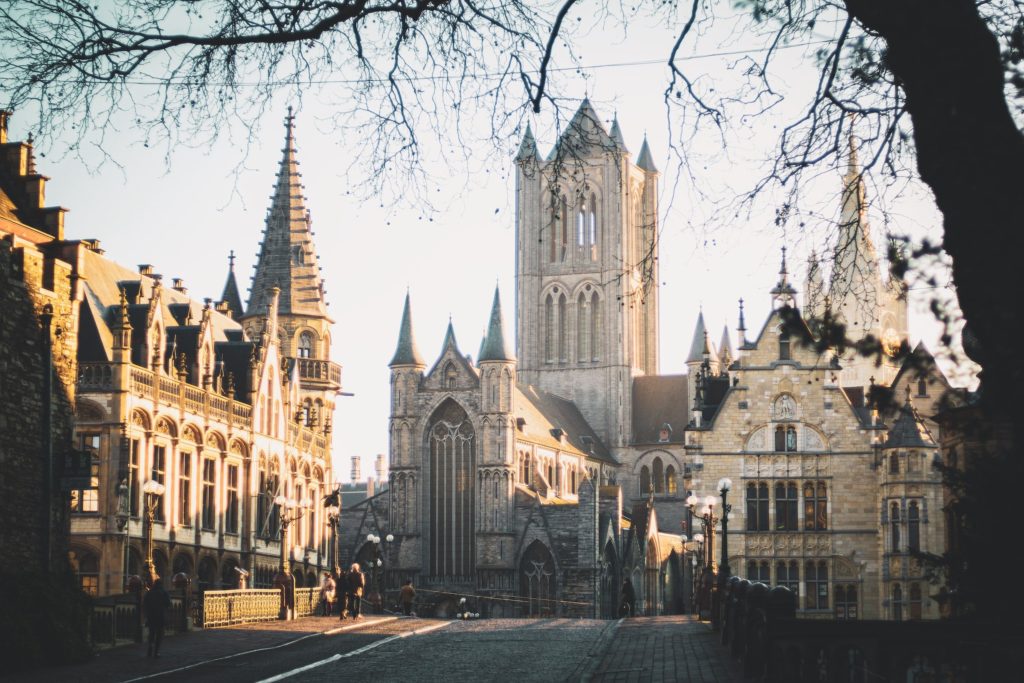
Read next:
One Day in Reykjavík: 12 & 24 Hour Iceland Itineraries
The Ultimate Self-drive Golden Circle Road Trip Itinerary
A Spontaneous Winter Getaway to Iceland with TU
The Thorough Guide to South East France
The Best Stockholm Budget Itinerary with Prices
Check us out on social media!

